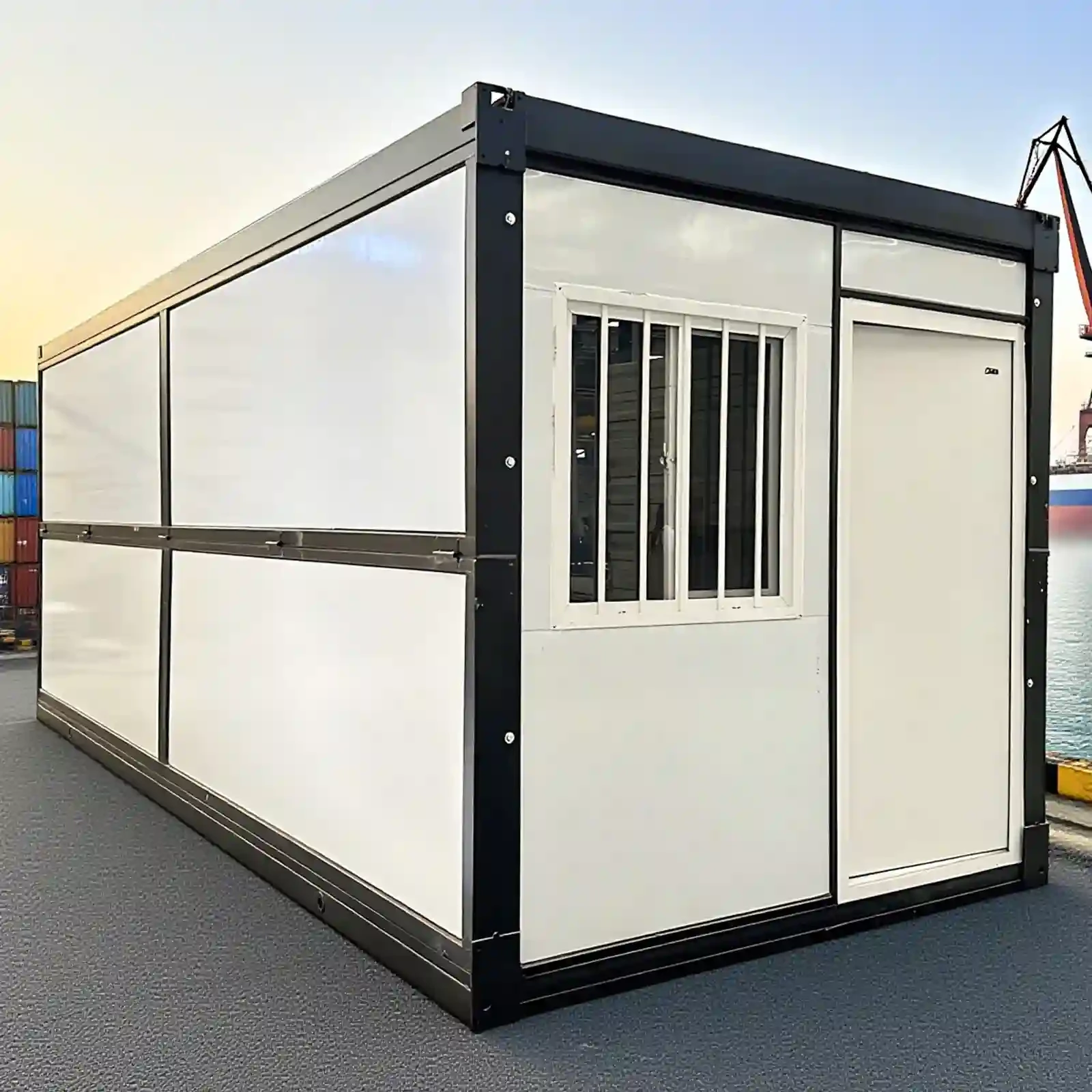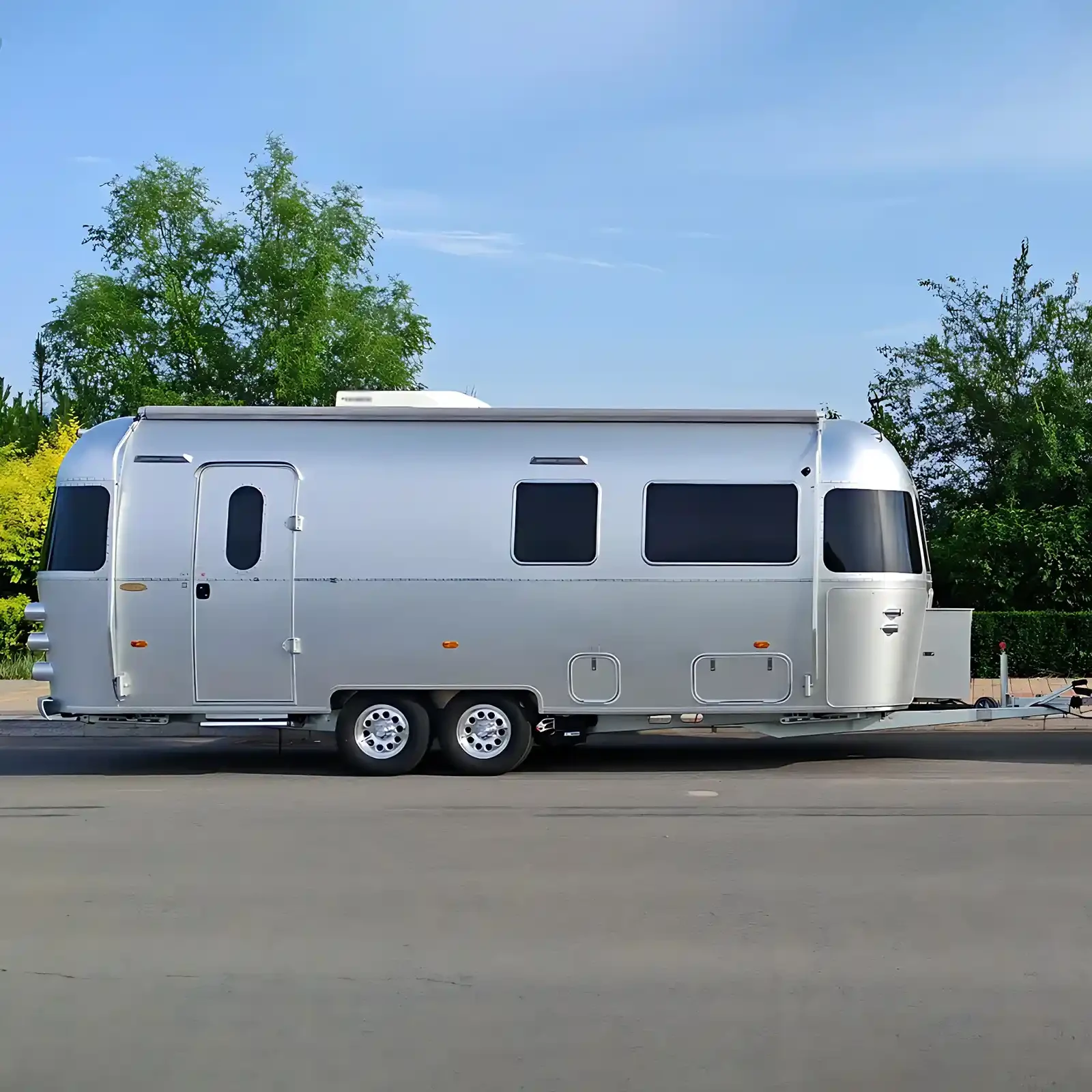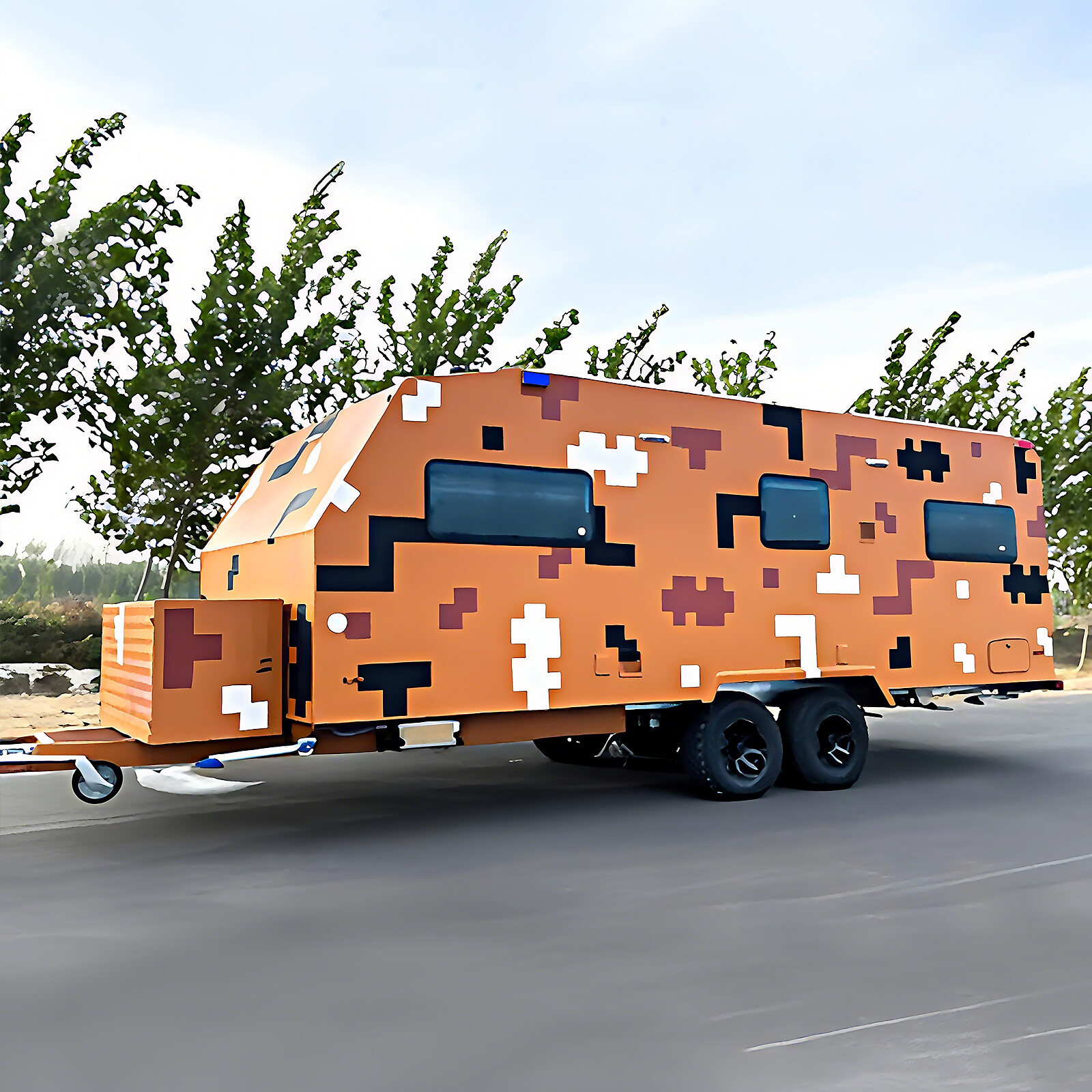In the wild, outdoor space capsules offer a unique living experience. However, the wild environment is complex and contains numerous noise sources, such as wind, rain, insects, wildlife, and potential human activity. Therefore, soundproofing and noise reduction measures are crucial, as their effectiveness directly impacts occupants' ability to enjoy a quiet and comfortable environment.
Selection and application effects of sound insulation materials
Sound insulation effect of cabin structural materials
Combination of a metal frame and composite shell: Outdoor space capsules typically utilize a metal frame with a composite shell. Metal frames, such as aluminum alloys, offer a certain degree of rigidity, providing stable support for the installation of sound insulation materials. Composite shells, such as fiberglass reinforced plastic (FRP) or carbon fiber reinforced plastic (CFRP), are not only lightweight and strong, but also offer considerable sound insulation. The fiber structure within these composite materials effectively absorbs and scatters sound, reducing its transmission. For example, fiberglass reinforced plastics excel at absorbing mid- and high-frequency sounds, providing a certain degree of insulation against high-frequency noises such as birdsong and insect chirping, common in the wild. Sound insulation can be further enhanced by properly designing the shell's thickness and structure. Generally speaking, a composite shell 3-5mm thick can reduce noise by 10-15 decibels.
Sound insulation materials are commonly used in the walls and ceilings of space capsules. Common filling materials include polyurethane foam and rock wool. Polyurethane foam offers excellent sound absorption and thermal insulation properties, and its porous structure effectively captures and dissipates sound energy. In outdoor environments, polyurethane foam is highly effective at insulating low-frequency noise, such as wind. Testing has shown that a 5-10cm thick layer of polyurethane foam filling the walls of a space capsule can reduce low-frequency noise by 15-20 decibels. Rock wool, an inorganic fiber material, offers fire resistance, sound insulation, and thermal insulation. It has a strong absorption capacity for mid- and low-frequency sounds, effectively blocking mid- and low-frequency noise, such as the calls of wild animals, that may occur in the wild. A space capsule filled with rock wool can achieve a 12-18 decibel reduction in mid- and low-frequency noise.
Sound insulation performance of door and window glass
Double- or triple-layer insulating glass: Doors and windows are key components of space capsule soundproofing. To improve sound insulation, space capsules typically utilize double or triple-layer insulating glass. The air layer or inert gas layer (such as argon) between the insulating glass effectively blocks sound transmission. The low thermal conductivity of air or inert gas reduces both sound conduction and convection. Furthermore, the thickness and quality of the glass also affect sound insulation. Generally speaking, double-layer insulating glass with 5mm thick glass can reduce noise levels by 25-30 decibels. In outdoor environments, this soundproofing effectively blocks outside noise from wind, rain, and some human activity. For example, in windy and rainy weather, a space capsule with double-layer insulating glass can noticeably reduce the sound of the wind and rain, creating a relatively quiet indoor environment.
The role of special glass coatings: In addition to the hollow structure, some space capsule glass features specialized coatings, such as acoustic film coatings. Acoustic film is a highly damping material that effectively absorbs sound energy and reduces both reflection and transmission. Applying this film to the glass surface further enhances its soundproofing performance, particularly at blocking mid- and high-frequency sounds. For high-frequency noises common in the wild, such as insect chirping and bird calls, glass with acoustic film can reduce noise by an additional 5-10 decibels, creating a quieter and more comfortable cabin environment.
The impact of structural design on sound insulation and noise reduction
Sealing design of the overall structure
The use of sealing strips and sealing processes: The overall structural sealing of the space capsule is crucial for sound insulation and noise reduction. Sealing strips are used to seal all joints within the capsule, such as between frames, between frames and the outer shell, and at the joints between doors and windows and the capsule. These strips offer excellent elasticity and weather resistance, ensuring a tight fit between joints and preventing sound transmission through gaps. Furthermore, the use of advanced sealing processes, such as welding and riveting followed by sealing, can further enhance the sealing effect. For example, during the installation of the capsule's doors and windows, EPDM sealing strips and a multi-point locking system are used to ensure a secure seal between the doors and windows and the capsule. Testing has shown that this effective sealing design can reduce noise transmission by 10-15 decibels.
Reduce Structural Gaps and Holes: In the capsule's structural design, unnecessary gaps and holes are minimized. Sound easily propagates through these gaps and holes, creating a "short circuit" for sound. Unavoidable holes, such as those in pipes and cables, are sealed with sealing materials. For example, where pipes pass through the capsule, sealing materials such as fireproofing mortar are used to ensure a seal while also providing fire and water resistance. By reducing structural gaps and holes, sound transmission is effectively reduced, improving the capsule's sound insulation performance.
Optimized design of sound insulation structure
Double-layer or multi-layer structures: Some high-end outdoor space capsules utilize double-layer or multi-layer structures to enhance sound insulation. For example, the capsule walls utilize a double-layer structure with a middle layer of air or sound insulation material. This structure effectively reduces sound transmission by multiple reflections and absorption. The air layer acts as a buffer, while the sound insulation layer further absorbs sound energy. According to actual testing, capsules with double-layer walls and a middle air layer of 5-10cm thick can achieve an overall sound insulation improvement of 15-20 decibels compared to single-layer structures. In outdoor environments, this double-layer structure effectively blocks external noise, providing a quieter environment for occupants.
Properly Layout Soundproofing Structures: Within the capsule, the proper placement of soundproofing structures can also improve soundproofing. For example, areas requiring high levels of quiet, such as bedrooms, can be located away from noise sources, while soundproofing barriers or partitions can be installed between the noise source and the bedrooms. Soundproofing barriers can be made of sound-absorbing materials, such as sound-absorbing cotton or panels, which effectively block the transmission of sound. By effectively arranging soundproofing structures, the impact of noise on occupants can be effectively reduced, improving the acoustic quality of the capsule.
Evaluation of sound insulation and noise reduction effects in actual field environments
Sound insulation effect under different noise sources
Wind noise blocking effect: In the wild, wind noise is a common source of noise. By adopting the above-mentioned sound insulation materials and structural design, outdoor space capsules can achieve excellent results in blocking wind noise. Under normal wind conditions (force 3-6), the space capsule, which uses high-quality sound insulation materials and a well-sealed design, can reduce external wind noise to below 30 decibels, making the occupants almost imperceptible to the wind noise interference inside the cabin. For example, in windy areas such as the seaside or mountaintops, the space capsule's sound insulation measures can effectively reduce the impact of wind noise on occupants' rest and activities, allowing residents to enjoy a relatively quiet environment inside the cabin.
Soundproofing against rain: Rain is a common noise in the wild. Even on rainy days, a capsule's soundproofing is crucial. Rain hitting the cabin's surface generates high-frequency noise. Double or triple-layered glass, infill with soundproofing materials, and a well-sealed design effectively reduce the impact of rain noise. In moderate to heavy rain, the sound of rain inside the cabin is reduced to around 40 decibels, barely disturbing occupants' daily lives. For example, even on rainy days, occupants of a cabin nestled in the forest can quietly read, rest, and enjoy the tranquility of the rain.
Bio-noise blocking effect: Bio-noise in the wild, such as insects, birds, and wild animals, has different frequency ranges. For high-frequency insect and bird sounds, the capsule's composite shell, hollow glass, and sound insulation materials can effectively block them, reducing them to around 35 decibels, allowing residents to enjoy the sounds of nature without being overly disturbed. For low-frequency wild animal calls, filling with sound insulation materials and optimizing the structural design can also effectively reduce their volume and minimize the impact on residents. For example, a capsule near the grassland can effectively block the calls of wild animals in the distance, providing residents with a relatively quiet resting environment.
Stability of sound insulation effect in long-term use
The impact of material aging on sound insulation: In the field, the capsule's sound insulation materials and structure are subject to natural environmental factors such as UV radiation, temperature fluctuations, and humidity changes, which can cause material aging. Material aging can affect sound insulation. For example, sealing strips may lose their elasticity under long-term UV exposure, resulting in a decrease in sealing performance and, consequently, reduced sound insulation. However, by selecting high-quality, weather-resistant materials and regularly maintaining the capsule, such as replacing aged sealing strips and checking the integrity of the sound insulation materials, the stability of the sound insulation effect can be effectively maintained. Generally speaking, a properly maintained capsule can maintain a drop in sound insulation performance within 5 decibels within 5-10 years of use.
The impact of structural stability on sound insulation: The structural stability of a space capsule also affects its sound insulation. In outdoor environments, it may be subject to external forces such as wind and earthquakes, causing the structure to loosen or deform. This loosening or deformation can compromise the seal and increase the path for sound transmission. Therefore, when designing and constructing a space capsule, it is important to ensure structural stability and conduct regular inspections and maintenance. For example, regularly check the frame connections for looseness and tighten any loose parts promptly. By ensuring structural stability, the capsule's sound insulation can be effectively maintained, providing occupants with a long-term, stable, and quiet environment.
Through the rational selection of soundproofing materials, optimized structural design, and effective sealing measures, outdoor space capsules achieve excellent sound insulation and noise reduction in outdoor environments. Although factors such as material aging and structural stability may affect long-term use, regular maintenance and servicing can effectively maintain the stability of the sound insulation effect, providing residents with a quiet and comfortable living space in the wild. With the continuous advancement of science and technology and the development of material technology, the sound insulation and noise reduction performance of outdoor space capsules is expected to be further improved, bringing greater improvements to people's outdoor living experience.

 USD
USD
 GBP
GBP
 EUR
EUR






